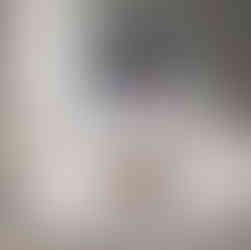Rebels with a Paintbrush: Kazimir Malevich
- Bev J
- Sep 6
- 3 min read
The Radical Who Reduced Art to Pure Feeling
While his fellow Russian Kandinsky was painting music, Kazimir Malevich shocked the world by painting… nothing. Just a black square. And somehow, that “nothing” changed everything.
The Rebel Who Made Nothing Into Everything
In 1915, Malevich hung a simple black square on a white background in a St. Petersburg gallery. Outrage followed. Where was the skill, the beauty, the art?
That “Black Square” wasn’t just a painting — it was a manifesto. Kandinsky made music visible; Malevich stripped art to pure feeling, pure geometry, pure spiritual essence.
Two Russian rebels. Two revolutions.
Two Russian Revolutions, Two Visions
Kandinsky’s Russia: Imperial Mysticism
Around 1910, Kandinsky’s abstractions reflected a mystical, spiritual Russia full of theosophy and cosmic searching. His paintings swirled with musical harmony.
Malevich’s Russia: Revolutionary Purity
By 1915, Russia was on the brink of political upheaval. Malevich’s Suprematism rejected bourgeois decoration. He wanted something pure, essential, revolutionary.
Where Kandinsky heard colours, Malevich felt squares. Where Kandinsky painted spiritual symphonies, Malevich painted geometric manifestos.
Why Malevich Was the Geometric Rebel
He Invented Suprematism
Malevich created not just art but a philosophy: art freed from objects, expressing only “pure feeling” through geometry.
He Shocked with ‘Nothing’
In a world that prized realism, Malevich unveiled a black square as the “pinnacle” of art. It was radical, audacious, and unforgettable.
He Shaped the Bauhaus
His geometric purity influenced Bauhaus design, rippling through architecture, furniture, and modern graphics.
He Defied Stalin
While Kandinsky left Russia, Malevich stayed. His abstract works were branded “degenerate,” and he was forced back into figurative painting — but his rebellion had already reshaped art forever.
Why Malevich Prints Belong in Your Home
Meditative Power
His compositions radiate calm and balance — art as meditation for modern interiors.
Versatile Style
Suprematist geometry complements:
· Minimalist homes (clean lines, pure forms)
· Industrial décor (bold shapes against raw textures)
· Our Abstract collection (different faces of rebellion)
· Bauhaus-inspired pieces (Malevich was a precursor)
Historical Impact
Owning a Malevich reproduction is owning a piece of history — art that redefined what painting could be.
Styling Your Space with Suprematism
As Focal Points:
Bold geometric works anchor living rooms or offices without clutter.
In Gallery Walls:
Pair Malevich’s purity with Kandinsky’s colour symphonies for a dynamic dialogue.
In Minimalist Spaces:
Intrigue adds subtle interest and a statement artwork without breaking visual calm.
A Contrast That Changed Art
Two pioneers, two visions:
· Kandinsky: “Art should be like music — emotional, spiritual, synesthetic.”
· Malevich: “Art should be pure feeling — geometric, essential, revolutionary.”
Together, they proved abstraction could be infinite: swirling symphonies or stark manifestos.
Famous Prints That Preserve Revolution
Malevich’s artworks are now some of the most valuable paintings in the world. But his ideas belong in homes, not just museums.
Our Malevich reproductions are printed with archival pigment inks on sustainable Hahnemühle paper — the same standard trusted by museums worldwide.
Why Every Home Needs a Geometric Rebel
Malevich didn’t create decoration — he created a new language for art. His pure forms remind us that the boldest revolutions can come from simplicity.
In today’s age of visual noise, his clarity feels more radical than ever. A black square still whispers rebellion, balance, and truth.
Ready to bring some suprematist rebellion to your walls? Browse our Kazimir Malevich collection and discover why one square changed art forever.

















Comments